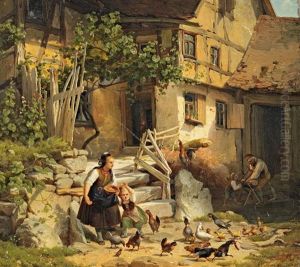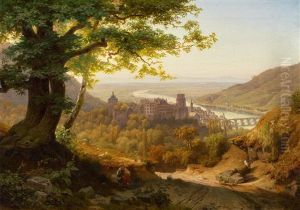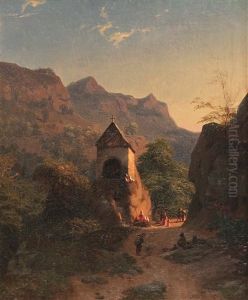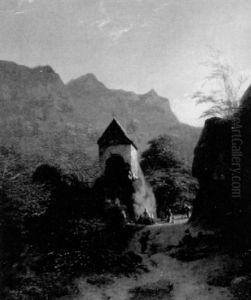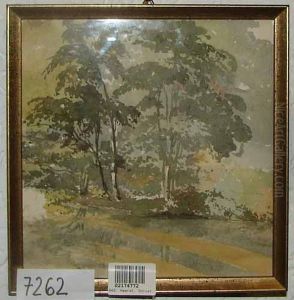Johann Christian Heerdt Paintings
Johann Christian Heerdt was a German painter born on August 11, 1780, in Mainz, which was then part of the Electorate of Mainz in the Holy Roman Empire. Heerdt's artistic journey commenced in his hometown, where he likely received initial training. However, details about his early life and education remain scant, as he is not as widely documented as some of his contemporaries. In the context of the era, it is plausible that he would have been exposed to the broader movements of European art, such as Neoclassicism, which dominated the late 18th and early 19th centuries.
Heerdt's body of work is not extensively cataloged, but he is known for religious paintings, portraits, and historical scenes, which were common genres of the time. He was active during a period of significant political and social change, which included the Napoleonic Wars and the subsequent restructuring of Europe at the Congress of Vienna in 1815. These events likely influenced the art market and patronage systems that would have supported artists like Heerdt.
Throughout his career, Heerdt would have been part of the German art scene, which was undergoing a transformation as Romanticism began to take hold. This movement emphasized emotion and individualism, a departure from the rationality of Neoclassicism. However, there is little evidence to suggest that Heerdt was a prominent member of the Romantic movement, or that his works had a notable impact on the development of German art.
Johann Christian Heerdt passed away on January 20, 1863, in Mainz, which by then was part of the Grand Duchy of Hesse within the German Confederation. His death marked the end of a long life that spanned the end of the old feudal structures and the rise of modern nation-states. While Heerdt may not be as celebrated as some of his contemporaries, his work remains a testament to the artistic endeavors of his time. Due to the limited documentation of his life and oeuvre, his influence on subsequent generations of artists is difficult to ascertain. Nonetheless, any existing works by Heerdt would hold value for their historical context and as examples of the art from this transitional period in European history.
